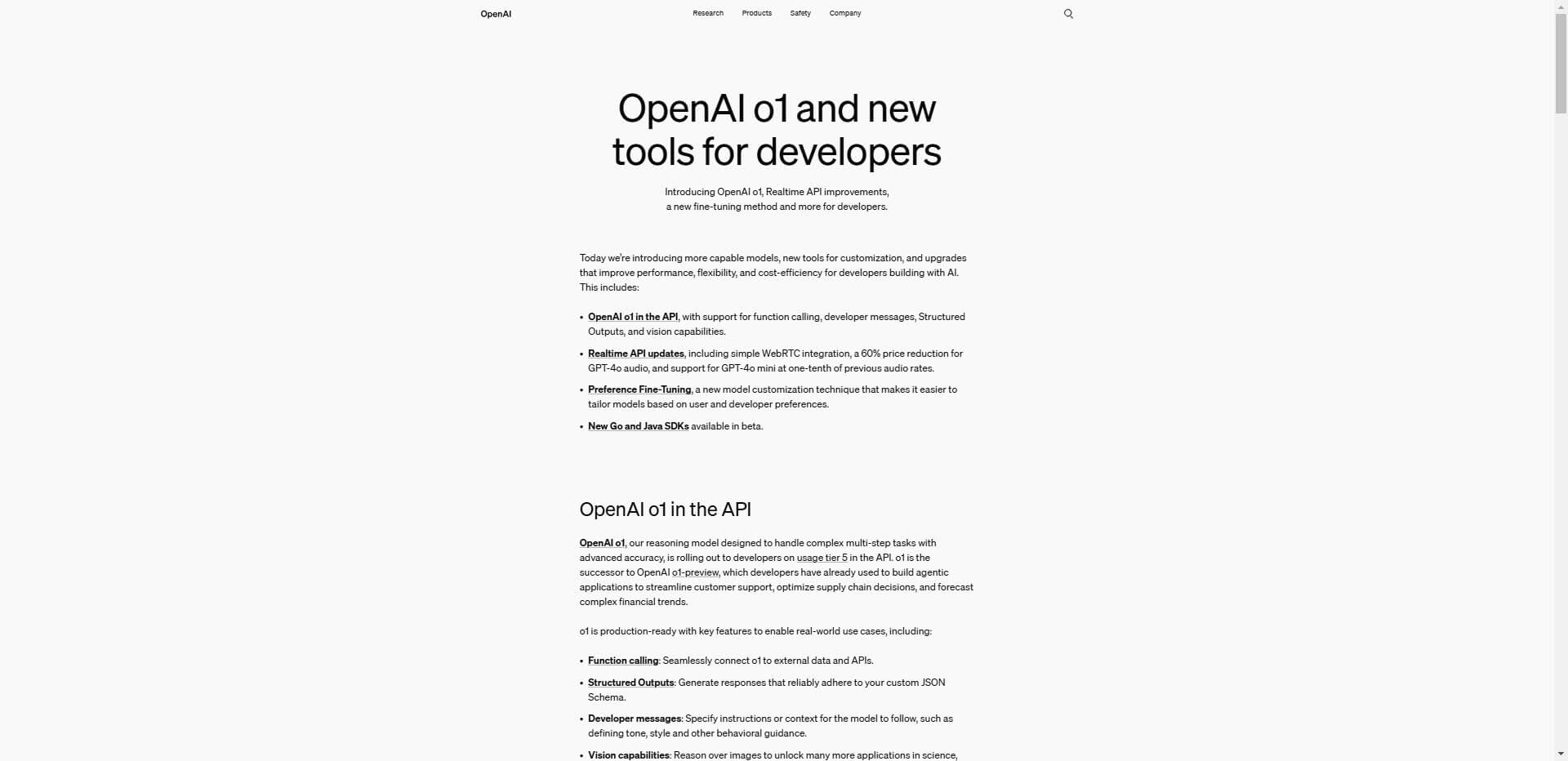As AI technology continues to evolve, developers need tools that offer greater accuracy, lower latency, and richer customization options. Enter OpenAI o1, the next-generation reasoning model, along with improved Realtime API features, Preference Fine-Tuning, and official Go and Java SDKs. In this post, we’ll explore how these innovations are empowering developers to build more intelligent, efficient, and cost-effective AI-driven applications.
What’s New With OpenAI o1?
OpenAI o1 sets a new standard for complex multi-step reasoning. With capabilities like function calling, Structured Outputs, developer messages, and vision integration, o1 enables building advanced applications in fields like customer support, supply chain optimization, and financial forecasting. It boasts:
- Enhanced Accuracy: Achieve industry-leading results on benchmarks like MMLU, MATH, and coding tasks.
- Lower Latency: Uses fewer reasoning tokens, meaning faster responses.
- Custom Reasoning Effort: Control the model’s thought process using a
reasoning_effortparameter.
Realtime API Upgrades
The Realtime API is now more flexible, affordable, and powerful. Key improvements include:
- WebRTC Integration:
Enjoy seamless voice interactions, better scalability, and improved resilience even under varying network conditions. - Reduced Pricing & Enhanced Models:
Access GPT-4o and GPT-4o mini at significantly lower rates, while enjoying improved voice quality and more reliable transcriptions. - Better Response Control:
- Concurrent Out-of-Band Responses: Enable background tasks without disrupting user conversations.
- Custom Input Context: Fine-tune the conversation flow by specifying which items go into the model’s input.
- Controlled Response Timing: Use server-side Voice Activity Detection (VAD) to gather data before triggering a response.
- Extended Session Length: Run sessions up to 30 minutes long.
Preference Fine-Tuning: Tailor Models to Your Needs
Preference Fine-Tuning (PFT) offers a new way to customize AI models based on subjective preferences. Instead of relying on strictly labeled outputs, PFT uses pairwise comparisons to teach the model what users prefer. Key benefits include:
- Subjective Optimization: Perfect for creative tasks, personalized assistance, and brand-specific tone.
- Easy Implementation: Similar pricing to Supervised Fine-Tuning, rolling out first for gpt-4o models.
Official Go and Java SDKs
Developers can now seamlessly integrate OpenAI’s capabilities into Go and Java applications. These SDKs provide:
- Typed Request and Response Objects: Simplify interactions with AI models.
- Robust Ecosystems: Leverage Go’s concurrency model or Java’s enterprise-scale libraries to build efficient, scalable AI solutions.
Real-World Impact
From voice assistants and real-time translators to AI-driven forecasting tools, these enhancements push the boundaries of what’s possible. Developers report improved cost-efficiency, better model behavior, and higher accuracy scores across diverse benchmarks and domains.
Take the Next Step
Ready to unlock next-level performance for your AI applications? Check out the official documentation to learn more about:
Start experimenting today and join the next wave of innovators building faster, smarter, and more personalized AI experiences.
https://open.spotify.com/episode/1M2pgrruA6dTHwTdNkrOya?si=wBQFtUBZQEODsMbsIePmYw
Source: OpenAI

